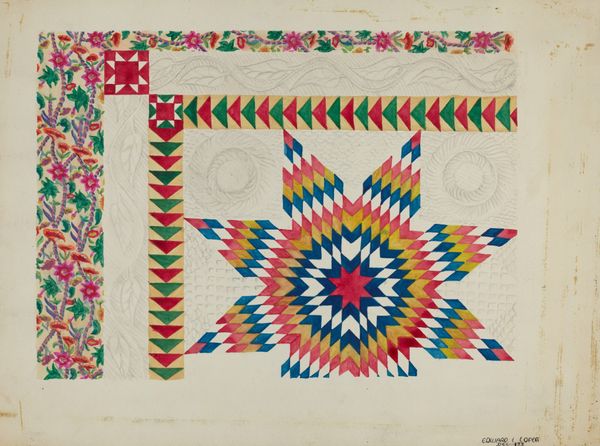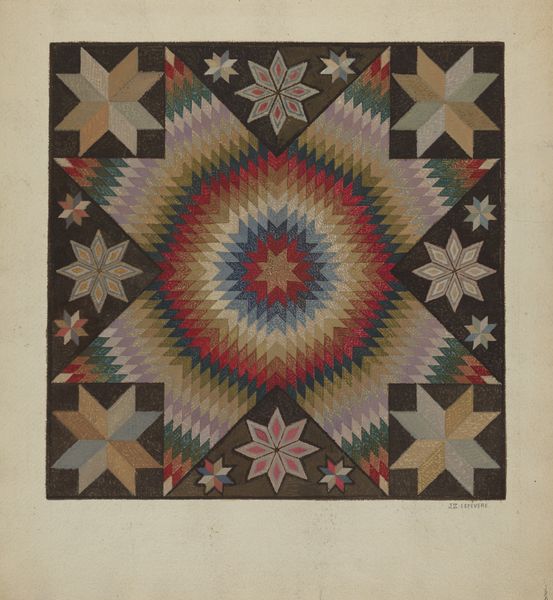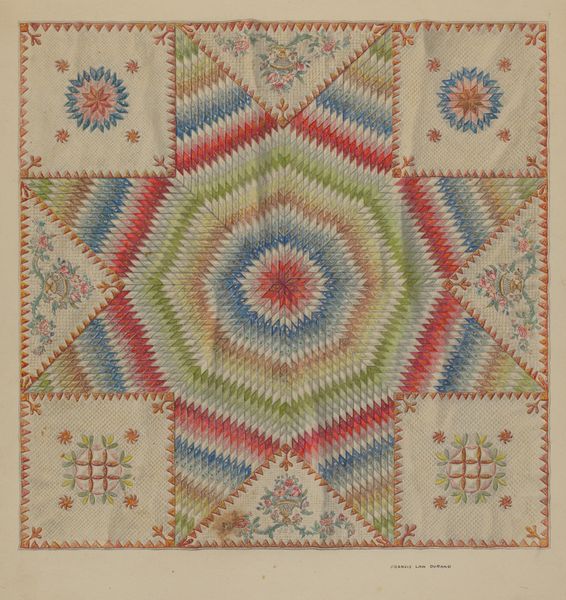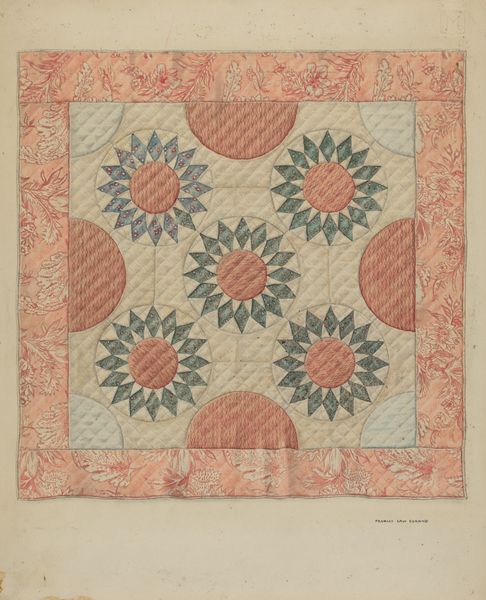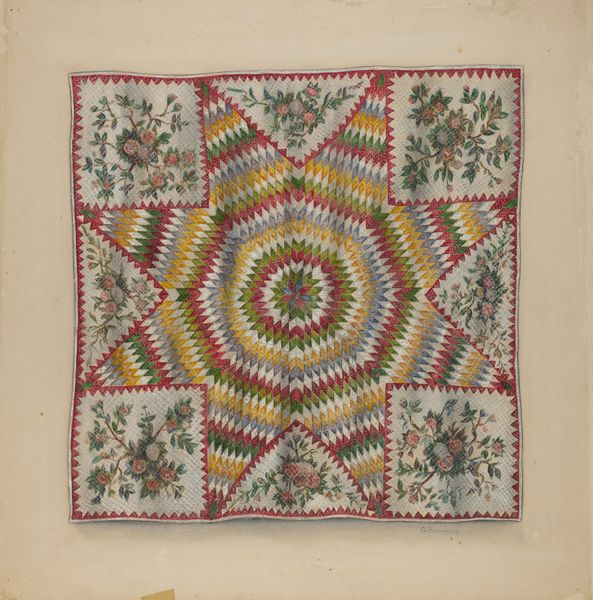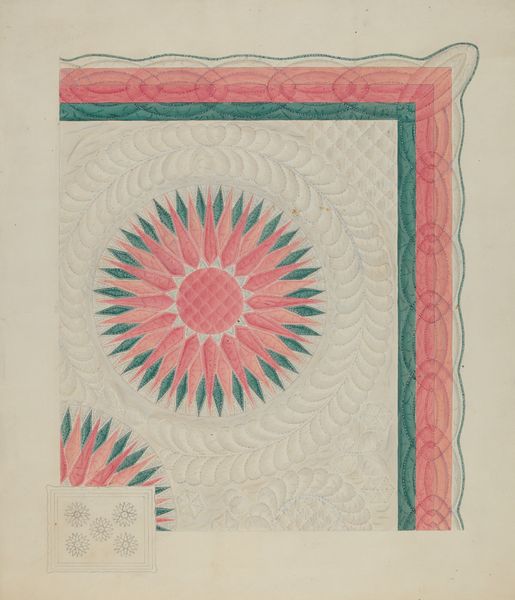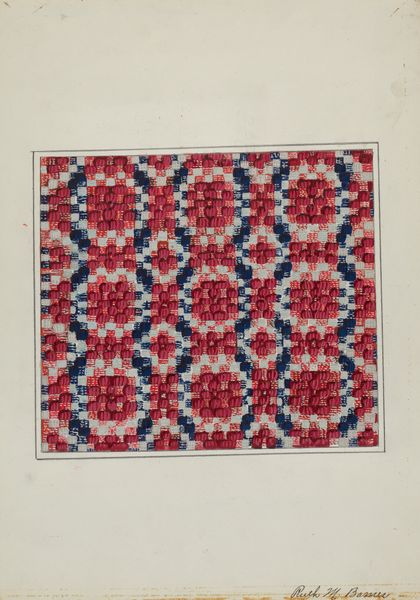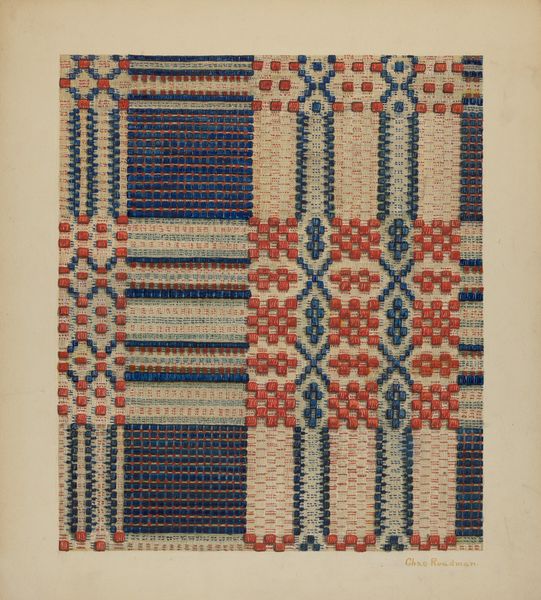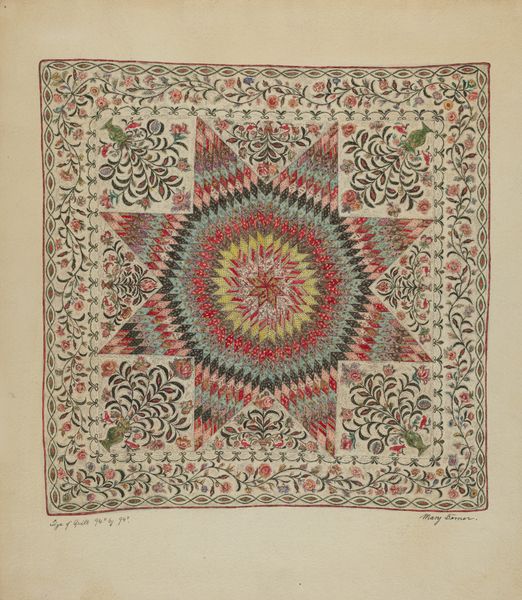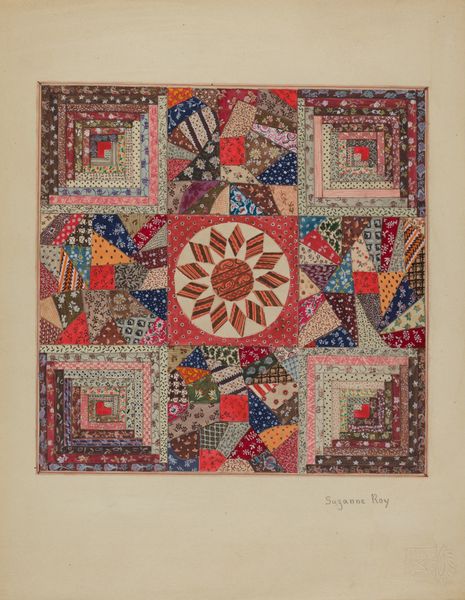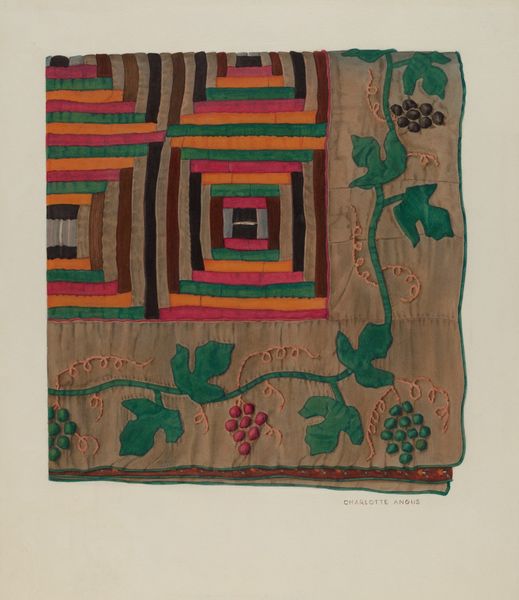
textile
#
folk-art
#
textile
#
geometric pattern
#
folk-art
#
geometric
#
decorative-art
Dimensions: overall: 25.4 x 35.2 cm (10 x 13 7/8 in.) Original IAD Object: 84" wide; 96" long
Copyright: National Gallery of Art: CC0 1.0
Curator: Let’s turn our attention now to an "Applique Quilt," dating to about 1936. This artwork, made using drawing and textile, is by Cornelius Frazier. Editor: Well, that certainly pops! It’s got this cheerful, almost kaleidoscopic vibe to it. I'm getting serious 70's show, end-credits-aesthetic vibes. A party quilt, maybe? Curator: Interesting observation. Its creation occurred during the height of the Great Depression and prior to the Second World War. The bold geometric pattern stands in stark contrast to the economic hardship prevalent at the time. Perhaps this vibrant creation reflects an intention to defy and overcome those austere realities. Editor: Maybe... but it’s almost aggressively cheerful, don’t you think? Like a scream into the void made of tiny diamonds and roses. But still charming! The juxtaposition of the floral border against the severe geometry is especially nice. Curator: Precisely. It seems rooted in both the tradition of folk art and in the emerging decorative art movement. The meticulous handcraft reflects the resourcefulness and domestic skills valued in the folk tradition. But the abstract geometric design and decorative intention move it into the more self-conscious realm of art for art’s sake. Editor: And I can practically smell the lavender scent of some old-fashioned closet... maybe this wasn't meant to only be cheerful. Was it kept hidden? Was the joy locked away like treasure? Curator: Well, its accessibility, of course, hinged on prevailing social conditions. These forms of decorative arts made by women, particularly in rural communities, were not initially considered important. Often such objects went unsigned, uncelebrated. It's only later in the twentieth century that their significance, their unique artistic value and commentary on the human experience were finally appreciated. Editor: It makes you wonder, doesn't it? How many untold stories are stitched into works like this one, voices quietly shouting across generations? Curator: It certainly gives you pause. Its legacy has transformed; now proudly showcased in museums as a potent symbol. Editor: Indeed. Now when I look at the 'Applique Quilt' by Cornelius Frazier, it is both exuberant and melancholy, reflecting upon memory, the passage of time, and of course, art history!
Comments
No comments
Be the first to comment and join the conversation on the ultimate creative platform.
